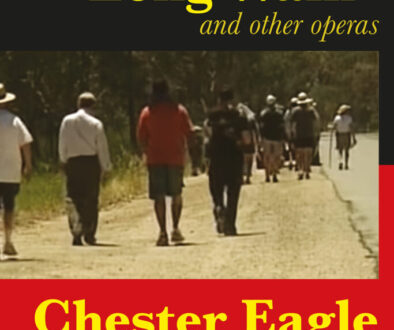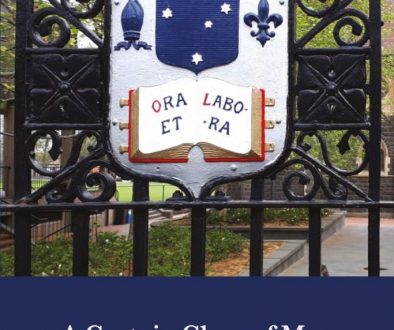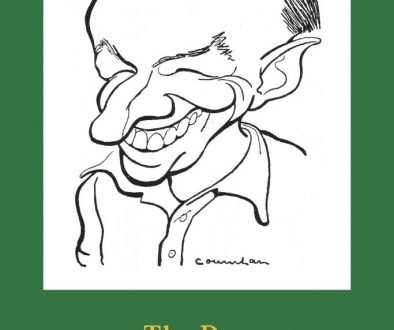O vos omnes

Carlo Gesualdo (1561 – 1613) is a composer remembered today as much for the spectacular murder of his first wife and her lover as for his music, most of it, though not all, on religious themes: sorrow-laden, of strange intensity, closely attentive to the words of its texts, and based on a belief that the only thing a man could do that was likely to win him respect in God’s eyes was to imitate, as best he could, the life and suffering of Jesus Christ. Gesualdo was not a modern man, but a minor aristocrat in the south of Italy. Meanwhile, in the north of the country and at the same time, what we know as the renaissance was flourishing in the wealthier city states such as Ferrara, to which Gesualdo linked himself via his second marriage. This division between the ways and the world-view of the north and the south is at the heart of this libretto’s presentation of a man who is both disturbing and difficult to forget.
Written by Chester Eagle
Layout by Chris Giacomi and Karen Wilson
Circa 11,900 words
Electronic publication by Trojan Press (2007)
The writing of this book:
In 2003 I made composers aware, via the newsletter of the Australian Music Centre in Sydney, that I had published a book of librettos (Love in the Age of Wings). There were a number of inquiries, and I felt encouraged. One respondent said he was keen to set a certain libretto, and we began to discuss this project, but then he took me by surprise: what he really wanted was a libretto based on the life of the Italian composer Carlo Gesualdo, 1561 (4?) – 1613.
I had come across Gesualdo in the writings of Aldous Huxley (as I recall), I had heard a few pieces of his music, and the folkloric aspect of his life had reached me by some means because I was aware that in a fit of jealous rage he had killed his wife and her lover. Beyond that I knew virtually nothing.
Off to the library then, the Borchardt at Latrobe and the Baillieu at Melbourne. I love these libraries but I never enter them, these days, without seeing myself as a crossover man, swinging between the electronic age (the computer I’m working on) and the wonderfully rich world of bound books, and pamphlets in boxes …
There wasn’t a great deal about Gesualdo in English; heaps in Italian, but books in that language are beyond me. I read Denis Arnold (1984) and also Cecil Gray & Philip Heseltine, (1926). I went to Grove’s Dictionary of Music and Musicians, another favorite, and then I found Glenn Watkins’ Gesualdo: the man and his music. I read it carefully, then discovered that he had produced a revised edition. More reading, more photo-copying and more notes.
I was searching for information, of course, but more importantly for a way to approach my task. I could have put it aside but I felt that since I had started writing librettos then I must follow the passions, interests, and quirks of composers who might ask me to write. The quirks of Carlo Gesualdo would be something else!
I was interested in him straight away, and I saw at the same time that he would be a difficult subject because it would be almost impossible to enlist the sympathies of an audience on his behalf. When still quite young he committed the murders for which he’s better remembered than for his music, the music is difficult for modern audiences to approach (and it hardly approaches them), and, although he did marry a second time, he was no less difficult than he’d been before. Oh dear oh dear!
There was also the matter of his whippings. His flagellation, three times a day if what has come down to us is true. Flagellation! It’s the extremity of self-hatred and how can you create an opera, with all the appeal, the eloquence and lyricism of that form, out of someone who hated himself so much that he had himself whipped?
He wished to imitate Christ, I told myself. Come in via that resplendent portal. I tried. I wasn’t convinced by any of the notes and possibilities I scribbled.
He’s a man with layers and levels in his personality, I told myself. Show him on top of his castle (well, large house, primitive by the standards of our time and not so wonderful in his own), listening to his peasants singing. Show him also on a middle floor, where he’s the centre of the various responsibilities, dignities and diplomacies of his position and his region. Then let there be a bottom layer, a pit, where the whippings take place, a level we won’t visit, as spectators, but will hear as we try to concentrate on the doings and personalities of the middle.
It wouldn’t work. It made Carlo Gesualdo too central. I refused to make him as representative of his time as this type of setting implied. I was myself a post-Renaissance man and my sympathies refused to engage with someone who wouldn’t come along with me. I was rejecting him, as a man who had his place in history, but whose energies had resisted the energies that my place in history demanded be accepted.
What to do now?
Opera is drama and drama is conflict. Back to the library. What were the conflicts of his time, what were the conflicts he caused in the modern mind, when we bothered to think about him? The first question was easy. The Church was holding people in eternal subjection and there were forces, active in the north of Italy (Gesualdo was in the south), that seemed liberating to those engaged with them. As for Gesualdo and the modern mind, he’d killed his wife and he’d never been brought to what we, in a modern state, would call justice. He got away with it. People of his class did, and no doubt many men of lower classes did the same. Women were subject to their lords and masters. I’m not sure if the church of his day had forgiven him because I’m not sure if he confessed to what he’d done, but it seemed to me that I had to make a modern audience forgive him, in some way at least, and there was only one way to do that, and that was to put everything on the level of a story, and in the story to make it clear what he’d done, so that we were at one and the same time aware of our condemnation and curious as to the nature of the beast that had killed the errant wife. That meant, I saw, bringing the male double standard into clear relief. I was fairly close to the answer I needed.
The death of Donna Maria D’Avalos would become folklore, the libretto would be divided between the Renaissance north and the Catholic south, and Carlo Gesualdo, wretched man, would be shown with all his yearnings for a love and tenderness that he couldn’t regularly and consistently provide for a woman of his class. Like many men in many corners of human history, he could only be decent when he was out of his allotted social space.
My libretto was done. I was proud of it. My composer withdrew without explanation, so here, dear readers, is the work I laboured over for someone else. I hope you enjoy it and I hope that in your mind’s ears you can hear a worthy music!



